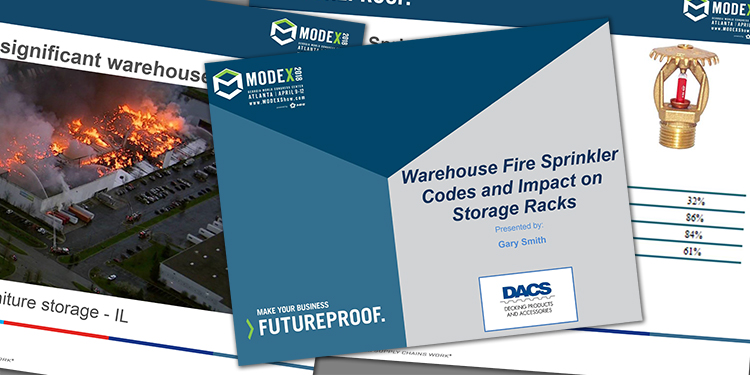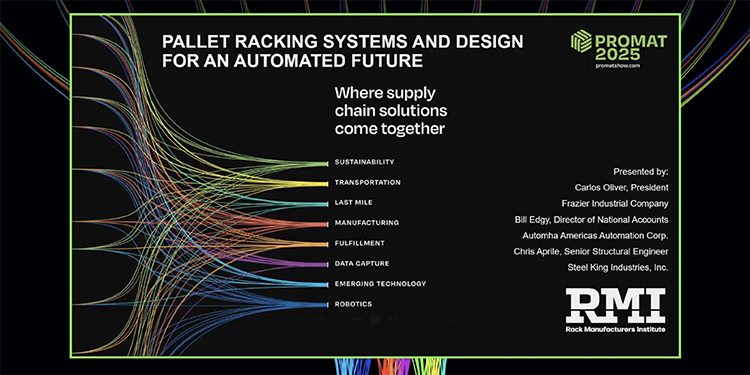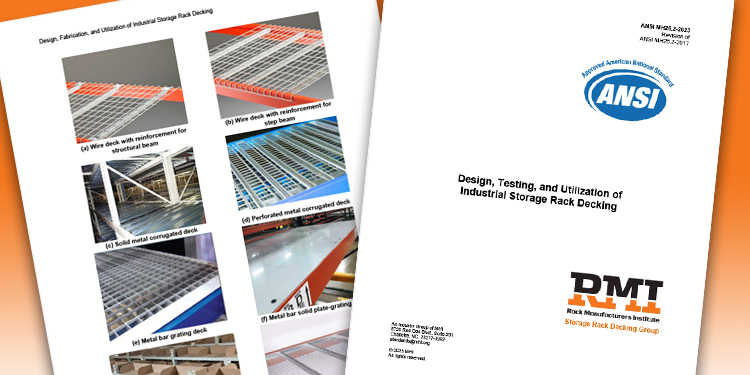As RMI’s representative on the National Fire Protection Association’s NFPA 13 committee that’s tasked with the creation and revision of national standards specific to the safe design of sprinkler systems, member Gary Smith knows warehouse fire sprinkler codes.
Smith shared some of his insights about sprinkler system design approaches, system installation, and component options to prevent fire deaths and property loss during MODEX 2018. The free, on-floor seminar “Warehouse Fire Sprinkler Codes and Impact on Storage Racks,” occurred last April. (For those who were unable to participate in the 45-minute session—or who wish to review its content—there is a recording of the presentation and its accompanying audio.)
Seminar Covers Need for Warehouse Fire Sprinkler Systems
The seminar overviews some of the most current warehouse fire statistics (1,200-plus annually in the U.S.), the associated direct property damages (an annual average of $155 million), and the two leading causes of warehouse fires (arson and electrical). It also walks through the evolution of the current warehouse fire sprinkler design and building codes that resulted from six separate, significant facility fires that occurred in the last two decades.
Wet pipe sprinkler systems suppress 84% of warehouse structure fires. That makes the method one of the most effective ways to reduce potential damage and deaths. Yet, to ensure its proper operation, a sprinkler system’s in-rack design must allow the water to flow through the storage system in the most optimal manner.
Building Codes Highlighted
That’s why the presentation discusses three pertinent warehouse fire sprinkler design and building codes recommended by RMI:
- NFPA 13, a design standard for the installation of sprinkler systems within a building, including pipe diameters and distances between sprinkler heads.
- The International Code Council (ICC) International Fire Code (IFC), regulations to safeguard life and property from fires and explosion hazards.
- FM Global Property Loss Prevention Data Sheets, from the world’s largest commercial insurer, which outline stringent engineering standards to reduce the potential for fires.
Further, the seminar dives into the three areas a fire protection engineer considers when determining which rules need to be followed when designing a warehouse’s fire suppression system. They are:
- The type of items stored (non-combustibles, plastics, furniture, paper and wood products, and more).
- The type and density of the rack and the pallets used to store products.
- The heights of both the racks and the building.
Additionally, the presentation reviews some of the devices and accessories manufacturers and owners can add into a rack structure. These include devices that ensure that the water flows through designated flue spaces. Other components maintain overhead clearances to prevent blocked water spray. The session also shares considerations for the location of in-rack sprinkler heads so as to avoid impacts from forklifts.
Learn More About Warehouse Fire Sprinkler Systems
Looking for more information about fire suppression systems and their impact on rack design? Further details are in the “Building Departments and Fire Codes” section of RMI’s frequently asked questions (FAQs) page.




